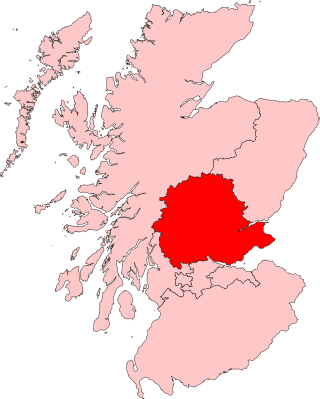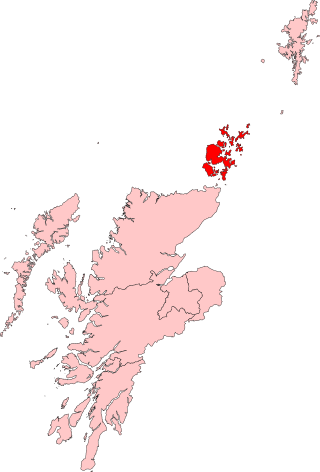This article relies largely or entirely on a single source .(December 2024) |
The 1999 Stirling Council election was held on 6 May 1999, the same day as the other Scottish local government elections and the Scottish Parliament general election.
This article relies largely or entirely on a single source .(December 2024) |
The 1999 Stirling Council election was held on 6 May 1999, the same day as the other Scottish local government elections and the Scottish Parliament general election.
| Party | Seats | Gains | Losses | Net gain/loss | Seats % | Votes % | Votes | +/− | |
|---|---|---|---|---|---|---|---|---|---|
| Labour | 11 | 50.0 | 38.0 | ||||||
| Conservative | 9 | 40.9 | 27.2 | ||||||
| SNP | 2 | 9.1 | 24.8 | ||||||
| Liberal Democrats | 0 | 0.0 | 9.0 | ||||||
| Independent | 0 | 0.0 | 1.1 | ||||||
Source: [1]

The Highlands and Islands is one of the eight electoral regions of the Scottish Parliament, created in 1999. Eight of the parliament's first past the post constituencies are sub-divisions of the region and it elects seven of the 56 additional-member Members of the Scottish Parliament (MSPs).

South of Scotland was one of the eight electoral regions of the Scottish Parliament when it was created in 1999. The region was replaced with South Scotland in 2011 following a review.

Mid Scotland and Fife is one of the eight electoral regions of the Scottish Parliament which were created in 1999. Nine of the parliament's 73 first past the post constituencies are sub-divisions of the region and it elects seven of the 56 additional-member Members of the Scottish Parliament (MSPs). Thus it elects a total of 16 MSPs.

In the United Kingdom (UK), each of the electoral areas or divisions called constituencies elects one member to the House of Commons.

Central Scotland is one of the eight electoral regions of the Scottish Parliament which were created in 1999. Nine of the parliament's 73 first past the post constituencies are sub-divisions of the region and it elects seven of the 56 additional-member Members of the Scottish Parliament (MSPs). Thus it elects a total of 16 MSPs.

Orkney is a constituency of the Scottish Parliament (Holyrood) covering the council area of Orkney. It elects one Member of the Scottish Parliament (MSP) by the first past the post method of election. It is also one of eight constituencies in the Highlands and Islands electoral region, which elects seven additional members, in addition to the eight constituency MSPs, to produce a form of proportional representation for the region as a whole.

Shetland is a constituency of the Scottish Parliament (Holyrood) covering the council area of Shetland. It elects one Member of the Scottish Parliament (MSP) by the first past the post method of election. It is also one of eight constituencies in the Highlands and Islands electoral region, which elects seven additional members, in addition to the eight constituency MSPs, to produce a form of proportional representation for the region as a whole.

The 1999 Highland Council election was held on 6 May 1999; the same day as elections to the Scottish Parliament and to the 31 other councils in Scotland. 80 councillors were elected from 80 wards using the plurality system. Independent councillors retained their status as the majority group, with councillors also being elected representing the Labour Party, Liberal Democrats, and Scottish National Party.

Local elections were held in Scotland on 6 May 1999, the same day as First Scottish Parliament elections. It was the second election for all 32 Scottish councils and the first after a major review into all wards.
Elections to East Ayrshire Council were held on 1 May 2003, the same day as the 31 other local government elections in Scotland and elections to the Scottish Parliament. This was the third election since the council's creation in 1995 and the last election to use first-past-the-post voting.

Elections to the City of Edinburgh Council were held on 6 May 1999, the same day as the other Scottish local government elections and the Scottish Parliament general election. Turnout was 61%, an increase of 16.5% on the 1995 turnout.

The 1999 elections to Argyll and Bute Council were held on the 6 May 1999 and were the second for the unitary authority, which was created under the Local Government etc (Scotland) Act 1994 and replaced the previous two-tier system of local government under Strathclyde Regional Council and Dumbarton and Argyll & Bute District Councils. It was held on the same day as the first Scottish Parliament election and resulted in no change to the administration of the council - independent control.

Elections to Angus Council were held on 6 May 1999, the same day as the other Scottish local government elections.

Elections to Glasgow City Council were held on 6 May 1999, the same day as the other Scottish local government elections.

The 2003 Moray Council election was held on 1 May 2003, the same day as the other Scottish local government elections and the Scottish Parliament general election. This was the last election to use the first-past-the-post voting system across 26 single member wards.

The 1999 Moray Council election was held on 6 May 1999, the same day as the other Scottish local government elections and the Scottish Parliament general election. The number of seats on the council grew from 18 in 1995 to 26. Each ward elected a single member using the first-past-the-post voting system.

An election to Comhairle nan Eilean Siar was held on 6 May 1999 as part of the wider 1999 Scottish local elections.

The City of Glasgow is divided into a number of wards. These electoral districts, as they are also known, are used to elect councillors to Glasgow City Council. The council, composed of the elected members from each ward, provides local government services to the City of Glasgow.
Elections to Inverclyde Council were held on 6 May 1999, the same day as other Scottish Local Government elections and the first Scottish Parliament Election.
Elections to Aberdeenshire Council were held on 6 May 1999; the same day as elections to the Scottish Parliament and to the 31 other Scottish local authorities. 68 councillors were elected from 68 wards using First Past The Post (FPTP). This election was conducted under boundary changes with an increased number of seats from the 47 used in the 1995 election. The Liberal Democrats were the largest party, with councillors also being elected representing the SNP, Independents, and Conservatives.